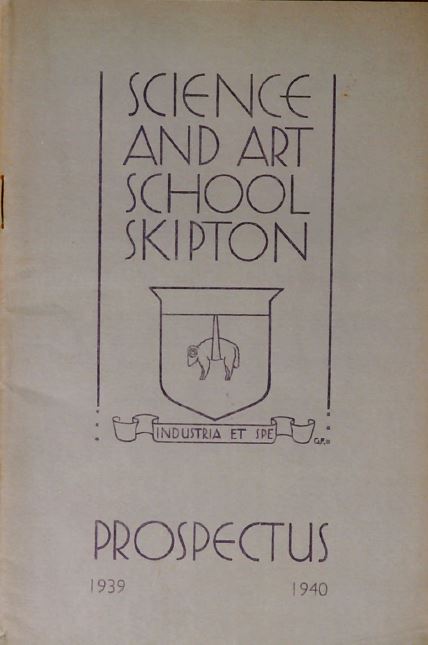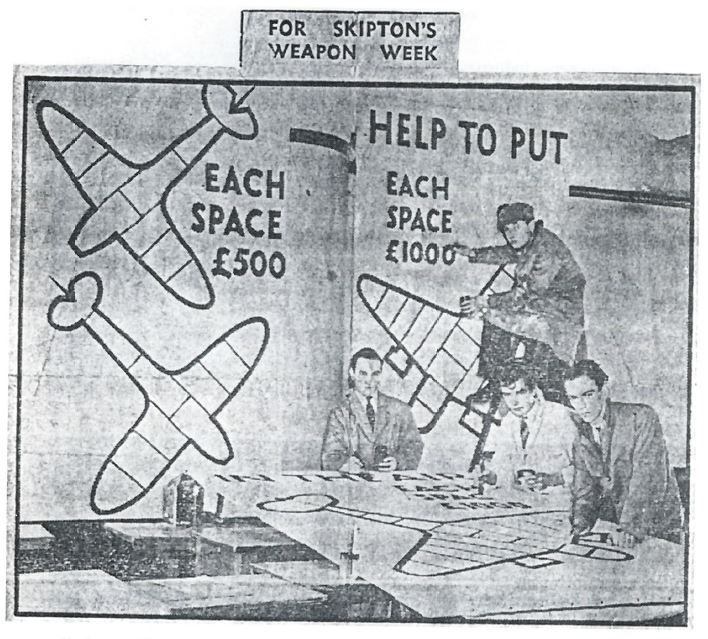Craven College Remembers War Years
As many of you will know, Craven College is celebrating our 200th anniversary in 2025 – an amazing achievement which of course means the College has experienced and been part of some incredibly famous historical events.
As the nation comes together to celebrate 80 years since the end of World War Two in Europe with a weeklong programme of VE Day Celebrations, we look back at our own experiences of how the war years touched Craven College and the wider Skipton area.
The war years bought much change to Craven College. In the mid-1930s, the institution consisted of The Skipton Art School and The Skipton Technical Institute together with two evening institutes: Brougham Street for girls and Christ Church for boys and girls.
As early as 1938, the threat of war was looming across Europe and then Principal E. Hugh Llewellyn was given special leave to attend a course for officers in the Territorial Army and was promoted to Lieutenant Colonel and Commanding Officer of the 6th Battalion Duke of Wellington’s Regiment. Colonel Llewellyn was a well-respected lecturer on subjects associated with arts and architecture and had served with distinction in World War 1.

The county authority in Wakefield began sending circulars in preparation for war, giving information on air raid precautions, and closure of schools if a state of emergency declared by the Government. Whilst on 08 September 1939 Mr Llewellyn was mobilised for military service. Miss F Shuttleworth, daughter of former Principal William Shuttleworth was appointed Acting Headmistress. In June 1940 John Cecil Midgley was appointed Principal.
A large part of the male population of Skipton was of course mobilised to the armed forces, which meant a vast number of females entered the workforce into vital wartime occupations, some serving at the AVRO aircraft factory in Yeadon, and some becoming land girls working in agriculture in the heavily rural local industry.
Mr Midgley, the caretaker of the Science and Art School joined the Skipton fire watch group. A shed was built on top of the Parish Church which gave volunteers an excellent view of the town.
The rural areas around Skipton were ideal safe places for children and young people to be evacuated to. A small girl named Kate, evacuated to Settle for the duration of the war, was appointed the first female Principal of the College some 40 years later!
In the 1940s, there was much discussion around how far budgets would stretch for blacking out College premises to conform with regulations! A compromise was reached and the main hall and three classrooms at Brougham Street whilst at the Science and Art school staircase windows, entrance and one floor’s worth of windows were darkened.

November 1940 saw the first War Weapons Week in Skipton with the local community coming together to raise a target of £50,000, which would pay for two fighters and two bombers. The target was smashed with £42,000 being raised on the first day, so it was raised to £100,000. As a part of the community, College was involved with the fundraising including students at the Art School creating promotional posters.
Craven College became a hive of war-related activity. Wartime lectures, advertised by leaflet and at the cinema, were held in subjects such as Wartime Cookery, “Handy Housewives”, and “Make Do and Mend,” whilst the lecture hall was used by outside organisations such as the Home Guard, the Ministry of Agriculture, and the Entertainment of Troops Executive Committee. Information continued to arrive regularly from Wakefield County Authority on subjects such as “travel during an air raid warning”, and air raid shelters – the authority deeming “in view of the excellent basement rooms in the School of Science & Art, no action to be taken with regard to the provision of air raid shelters”.
Student numbers dropped during the war as Craven College faced tough competition from the Air Training Corps, the Sea Cadets, and the Girls’ Training Corps, however College continued to develop and progress becoming Skipton Art School & Technical Institute in 1944.
The war created huge demand for part-time classes, and large numbers of demobbed men and women added to this increased need, despite the College buildings not being adequate to house such large numbers of students.
Anita Lall, Principal and CEO said, “It is fascinating to read about the role that Craven College, its staff and students played in World War 2, an important historical event. As an institution at the heart of its communities, I feel proud of the part that the College played in supporting the war effort.
“As educators, I feel it is important for younger generations to understand the impact that the war had on individuals, families, communities and the country – this is part of our history and it’s only when we understand the lessons of the past, than we can improve and not make the same mistakes.”



